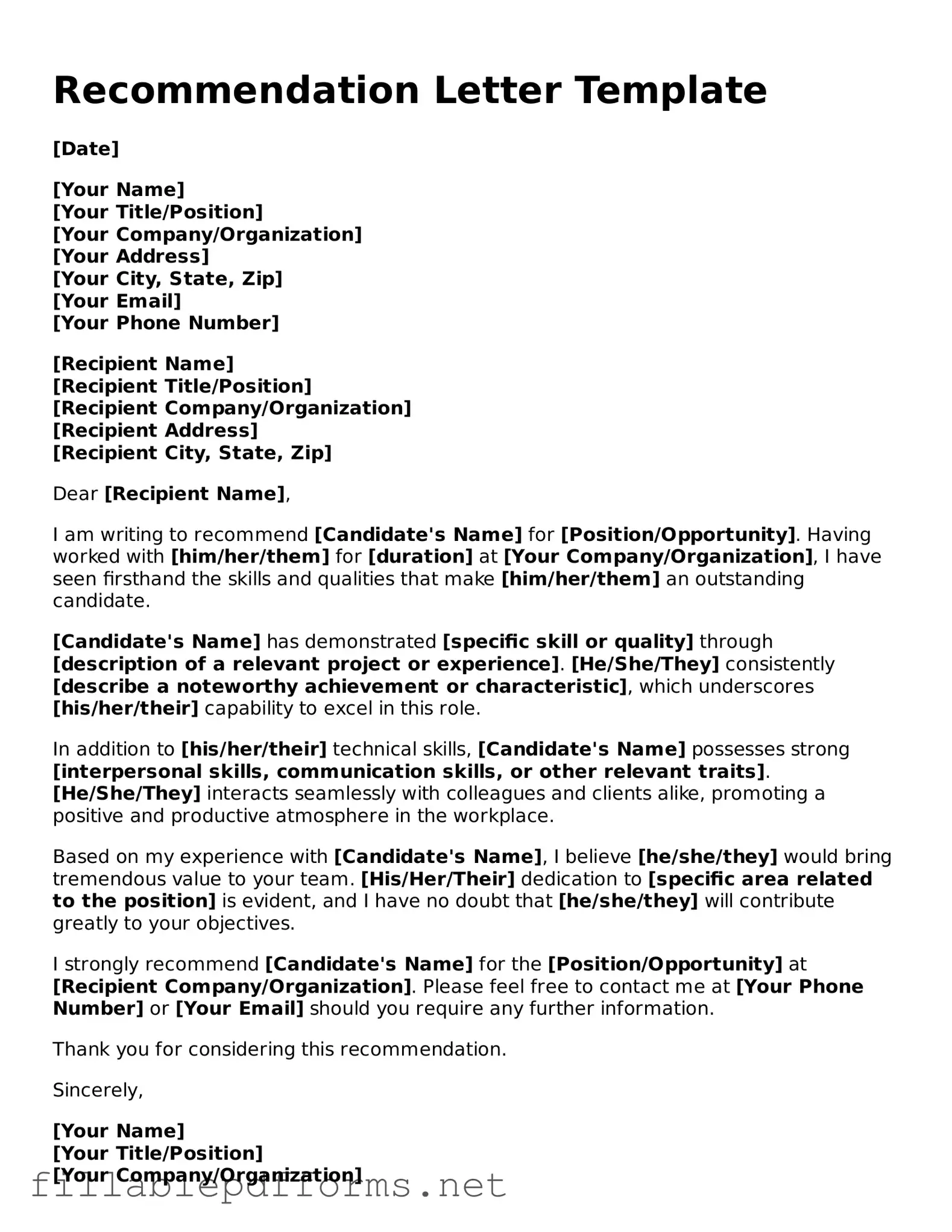Blank Recommendation Letter Template
A Recommendation Letter form is a document used to request and collect endorsements from individuals who can vouch for someone's qualifications, skills, and character. These letters play a crucial role in applications for jobs, schools, or other opportunities. Understanding how to properly utilize this form can significantly impact the success of your application.
Launch Editor Here
